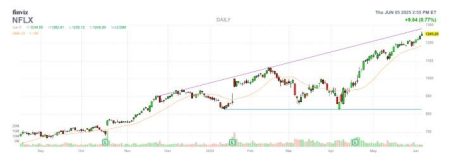The year 2024, as revealed by a Talker Research study commissioned by Traditional Medicinals, was a year of significant stress for many Americans. The average individual experienced stress-induced mental overwhelm approximately 156 times, roughly three times a week, often accompanied by brain fog. A substantial 41% of the 2,000 adults surveyed reported experiencing their peak stress levels during the year, and over a quarter anticipated further escalation by year’s end. Interestingly, despite this widespread inner turmoil, a significant portion, 45%, had never taken a mental health day specifically to address stress. This highlights the often-hidden nature of stress and the societal pressures that may discourage individuals from prioritizing their mental well-being. The study underscores the need for individuals to recognize and address their stress levels proactively.
A deeper dive into the study reveals the primary drivers of this pervasive anxiety. Financial concerns topped the list, cited by 35% of respondents, followed closely by anxieties related to the overall economy (28%). Physical health concerns (25%), the 2024 presidential election (20%), and global issues (19%) also contributed significantly to the collective stress burden. These findings reflect a complex interplay of personal, national, and global anxieties impacting individuals’ mental well-being. The manifestations of this stress were varied, with sleep disruption (42%), irritability (37%), fatigue (34%), headaches (33%), and feelings of worry or paranoia (31%) being the most commonly reported symptoms. This underscores the pervasive impact of stress, affecting not only mental well-being but also physical health and daily functioning.
While a majority of respondents (71%) recognized the link between stress reduction and improved mental health, their coping mechanisms varied widely. Many resorted to short-term relief strategies such as listening to music (47%), watching television and movies (39%), or enjoying a hot beverage (17%). While these activities can provide temporary respite, they often fail to address the underlying causes of stress. The study also revealed a near-even split between those seeking long-term wellness strategies and those prioritizing quick stress alleviation. However, a significant portion (47%) expressed a desire for stress-reduction techniques that could be seamlessly integrated into their busy schedules, highlighting the need for accessible and practical stress management solutions.
The study’s findings are contextualized by the economic realities of the time. Inflationary pressures, with prices rising approximately 20% while wages lagged behind at 17% between early 2021 and late 2024, significantly impacted household budgets and created anxieties surrounding financial security, particularly retirement savings. These economic challenges further exacerbated the existing stress levels, creating a cycle of financial worry and impacting overall well-being. However, there were signs of improvement, with wage growth surpassing inflation in May 2023, suggesting a potential easing of financial pressures. This positive economic trend, while promising, still leaves many individuals grappling with the financial setbacks of previous years, emphasizing the need for continued economic stability and accessible financial resources.
The study suggests a proactive approach to mitigating financial anxieties, particularly those related to retirement savings: portfolio diversification. Diversification, a cornerstone of sound financial planning, aims to maximize potential returns while minimizing risk. By strategically allocating investments across various asset classes, sectors, and geographies, investors can potentially cushion their portfolios against market volatility and economic downturns. Several diversification strategies are highlighted, including security diversification (holding a diversified portfolio of stocks), sector diversification (investing across different industries), industry diversification (investing within sub-sectors of a larger industry), capitalization diversification (investing across large, mid, and small-cap stocks), geographic diversification (including both domestic and international investments), and investment strategy diversification (utilizing a mix of value, growth, and index investing).
In conclusion, the study paints a picture of a stressed-out nation grappling with financial anxieties and seeking effective coping mechanisms. While temporary stress relievers can offer momentary solace, the study highlights the importance of addressing the root causes of stress, particularly financial concerns. Portfolio diversification emerges as a key strategy for mitigating market-related anxieties and enhancing long-term financial security. By adopting a proactive and diversified approach to investing, individuals can potentially navigate financial uncertainties with greater confidence and build a more resilient financial future. The study encourages a shift from reactive stress management to proactive financial planning, empowering individuals to take control of their financial well-being and reduce overall stress levels.










